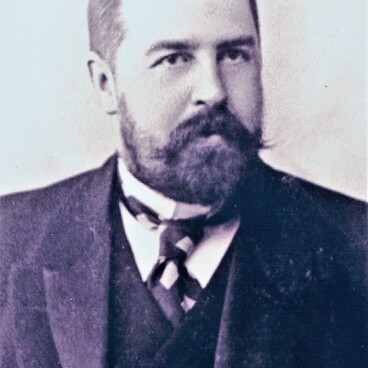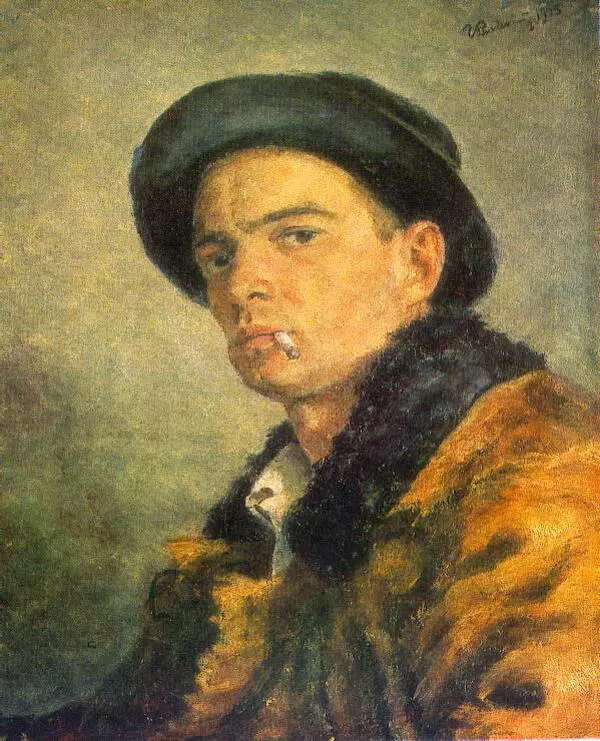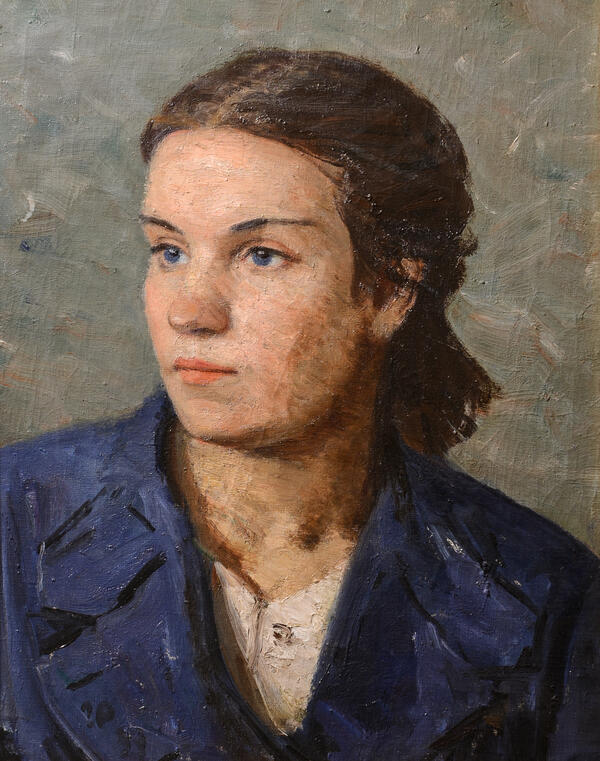The collection of the Shebekino History and Art Museum contains a painting “Shepherd” by the artist Georgy Ryazhsky. It was created in the first half of the 20th century. The canvas depicts a young guy who sat down to rest and have a smoke on a hillside. In the slumped shoulders and tilt of the shepherd’s head, Ryazhsky conveyed fatigue and concern.
The color scheme of the painting was restrained: shades of gray, green, brown. Ryazhsky painted with broad, vigorous strokes, and used this technique to give the canvas volume.
For “Shepherd” the artist chose a vertical canvas — it created a sense of importance of the figure, because nothing else distracted his gaze from the boy. Hidden power and unspent potential are felt in the main character. Ordinary people who were the builders of a new future life — the main motif of paintings Ryazhsky.
Georgy Ryazhsky was born in 1895 in the village of Ignatyev Serpukhov county, Moscow province in a peasant family. He received his initial art education at the Prechistenka evening worker’s courses — they were called the People’s Academy of Arts, because these classes gave young men and girls from the common people the opportunity to become workers in the arts.
During World War I, Ryazhsky was drafted to the front, where he spent 4 years. After his discharge, he remained in the Red Army, but worked in his specialty: writing posters and decorating anniversaries and holidays. In 1918 — 1920 Ryazhsky again went to study — in the State Free Art Workshops to Kazimir Malevich.
However, the direction of the avant-garde, in which the teacher worked, was alien to Georgy Ryazhsky. Instead, he found himself in the portrait genre. The main heroes of his work were the Soviet people — the builders of a new life. Among others, he often painted women — simple and modest workers, short-cut, broad-faced, full of inner energy, able to lead, to lead the masses. Because of this, Ryazhsky’s paintings were often called historical documents of the era: he depicted the people who stood at the origins of the new system.
Now works by Georgy Ryazhsky are housed in the Tretyakov Gallery, the Russian Museum, in the collections of other major museums in Russia, as well as in private collections.
The color scheme of the painting was restrained: shades of gray, green, brown. Ryazhsky painted with broad, vigorous strokes, and used this technique to give the canvas volume.
For “Shepherd” the artist chose a vertical canvas — it created a sense of importance of the figure, because nothing else distracted his gaze from the boy. Hidden power and unspent potential are felt in the main character. Ordinary people who were the builders of a new future life — the main motif of paintings Ryazhsky.
Georgy Ryazhsky was born in 1895 in the village of Ignatyev Serpukhov county, Moscow province in a peasant family. He received his initial art education at the Prechistenka evening worker’s courses — they were called the People’s Academy of Arts, because these classes gave young men and girls from the common people the opportunity to become workers in the arts.
During World War I, Ryazhsky was drafted to the front, where he spent 4 years. After his discharge, he remained in the Red Army, but worked in his specialty: writing posters and decorating anniversaries and holidays. In 1918 — 1920 Ryazhsky again went to study — in the State Free Art Workshops to Kazimir Malevich.
However, the direction of the avant-garde, in which the teacher worked, was alien to Georgy Ryazhsky. Instead, he found himself in the portrait genre. The main heroes of his work were the Soviet people — the builders of a new life. Among others, he often painted women — simple and modest workers, short-cut, broad-faced, full of inner energy, able to lead, to lead the masses. Because of this, Ryazhsky’s paintings were often called historical documents of the era: he depicted the people who stood at the origins of the new system.
Now works by Georgy Ryazhsky are housed in the Tretyakov Gallery, the Russian Museum, in the collections of other major museums in Russia, as well as in private collections.







